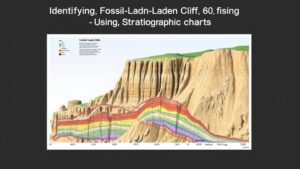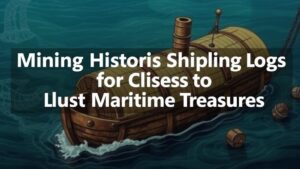Mining Historical Tax Records for Clues to Wealthy Estates and Artifact Sites
Mining Historical Tax Records for Clues to Wealthy Estates and Artifact Sites
This article explores the potential of historical tax records as a resource for archaeologists and historians in identifying wealthy estates and artifact sites. It highlights the methodologies employed in analyzing these records and presents case studies that illustrate their effectiveness in uncovering hidden histories.
The Importance of Tax Records in Historical Research
Historical tax records serve as a vital source of demographic, economic, and social data. They provide insights into property ownership, wealth distribution, and societal hierarchies during specific periods. e records can date back to the early modern period and vary widely in their availability and detail according to local and national governance.
Types of Tax Records
- Land tax assessments
- Poll taxes
- Property taxes
- Income tax records
Each type of tax record can reveal different aspects of wealth and land use. For example, land tax assessments often provide information about the size and value of estates, while poll taxes can indicate the number of individuals residing at a given property.
Methodology for Mining Tax Records
The process of analyzing historical tax records involves several critical steps, including:
- Locating relevant tax records in local or national archives
- Digitizing and transcribing the records for analysis
- Using GIS (Geographic Information Systems) technology to map data
- Cross-referencing findings with other historical documents
In practice, researchers often begin their work by identifying specific time periods and geographical areas of interest, followed by gathering available records. The use of GIS tools allows for spatial visualization, making it easier to correlate tax data with existing knowledge of artifact sites.
Case Studies
The Virginia Estate of John Singleton Mosby
In the mid-1800s, the estate of John Singleton Mosby, a Confederate cavalry commander, was analyzed using land tax records from Virginia. e records indicated substantial landholdings, which were later corroborated by archaeological findings of Civil War artifacts on the property. Mosby’s estate shows how tax records can guide field investigations.
New York City Tax Records and Dutch Colonial Artifacts
Research into 17th-century New York City’s tax records has uncovered information about early Dutch settlers and their estates. Tax assessments from this period have revealed the location of prominent households, leading to successful archaeological digs where artifacts indicative of daily life during the Dutch colonial era were recovered.
Challenges and Limitations
While mining historical tax records can yield significant insights, researchers face several challenges:
- Incompleteness of records due to fire or decay over time
- Variability in record-keeping practices across regions
- The need for expert knowledge to interpret legal and economic terminology
These challenges necessitate a cautious and methodical approach to ensure the accuracy of the interpretations made from these records. Cross-referencing with other historical sources remains crucial for validation.
Conclusion and Actionable Takeaways
Mining historical tax records represents a promising avenue for uncovering the historical landscape of wealthy estates and artifact sites. Researchers are encouraged to:
- Develop a focused research question to guide record searches and analyses.
- Collaborate with local historians and archivists to access specialized records.
- Use modern technology to enhance the mapping and analysis of data.
By effectively leveraging historical tax records, researchers can contribute to a richer understanding of the socio-economic conditions that shaped historical estates and their surrounding artifact landscapes.

